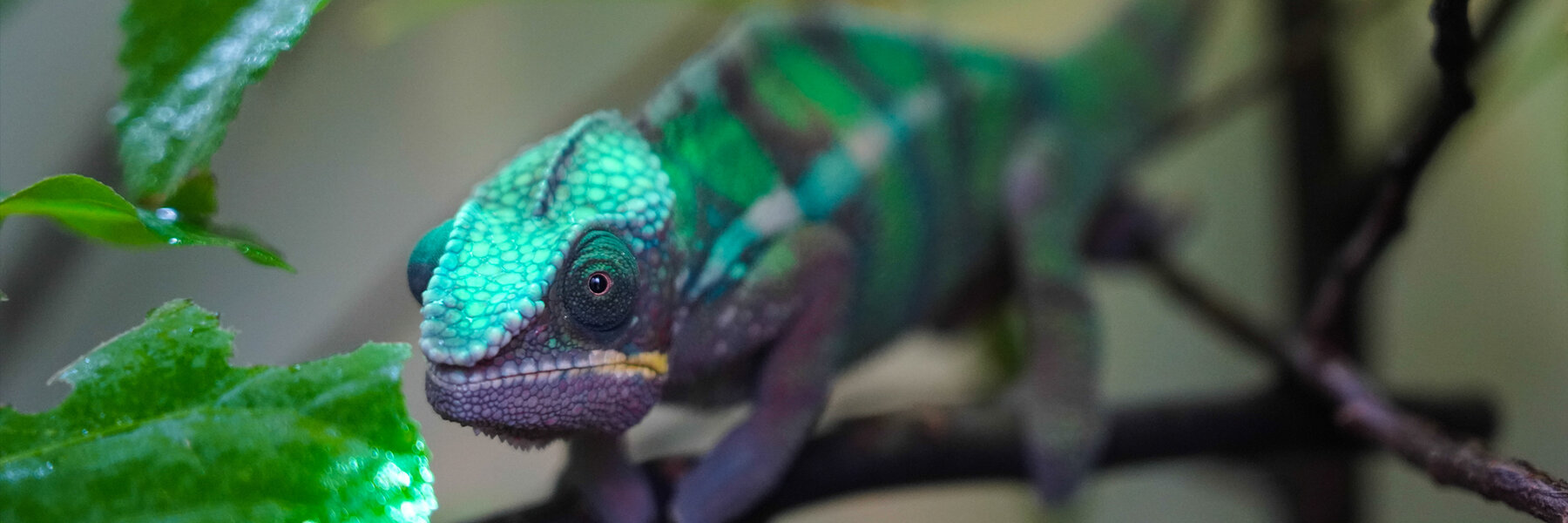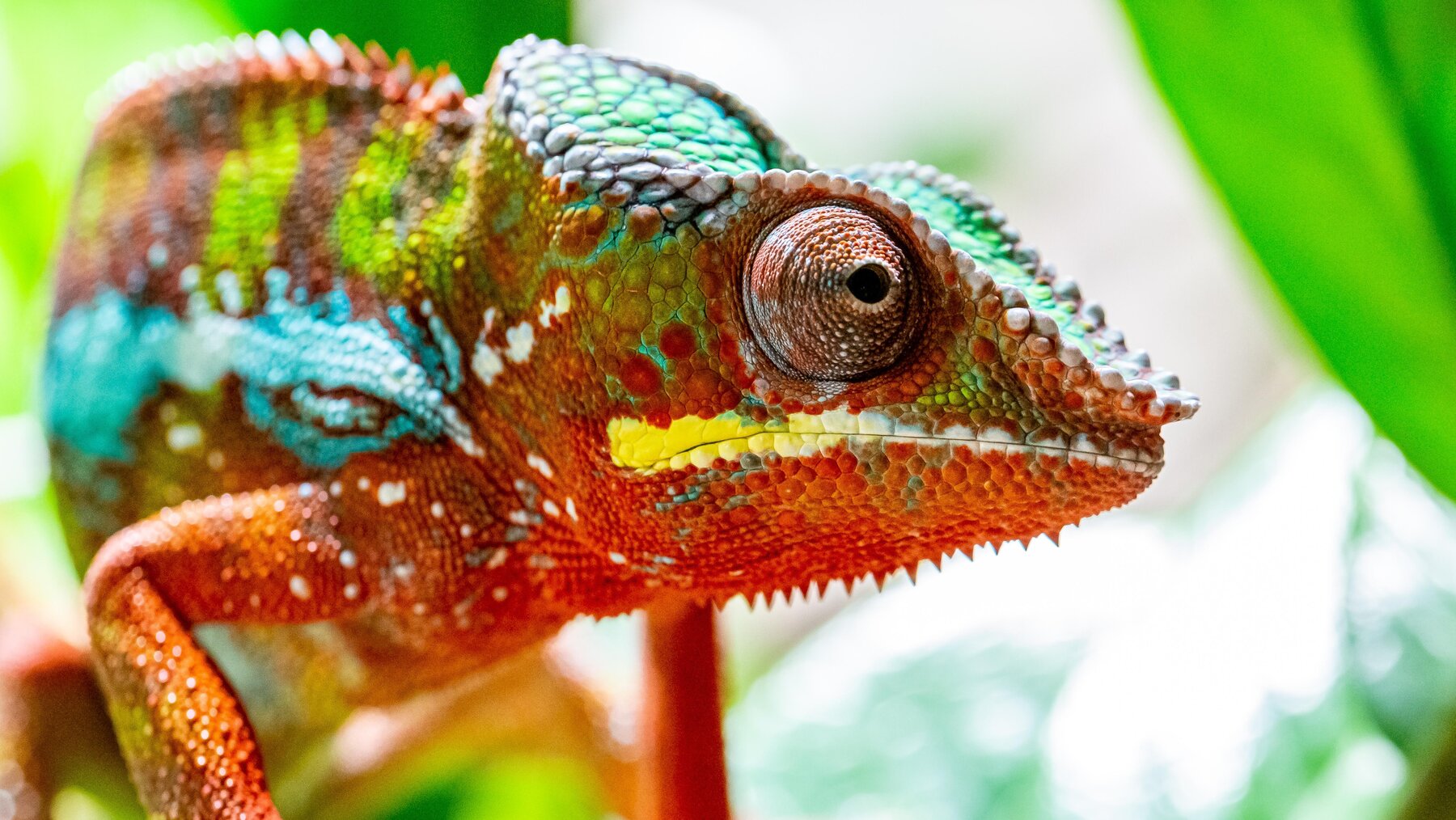
Panther chameleon
Furcifer pardalis
The reptile kingdom boasts many weird and wonderful creatures of all different shapes and colours. One of the most intriguing has to be the chameleon.
Chameleons not only change colour as a means of camouflage
They also use their extraordinary talent as a way to communicate emotions. If you are familiar with the chameleon colour code, you will be able to tell from a distance if it is feeling scared, relaxed or angry, for example. Skin colour is also influenced by light levels, temperature and humidity. Chameleons appear in a range of hues and patterns that combine green, brown, blue, white, black, yellow and orange. When the Yemen chameleons in Aquarium Berlin go green, we know they’re relaxed. If only we humans could know each other’s mood in advance – that would surely enhance our social interaction!
Characteristics
- Origin
Madagascar and offshore islands
- Habitat
Light forest and scrub areas near the coast
- Diet
Invertebrates and smaller reptiles
- Status
least concern
- Size
Male: up to 17cm
Female: up to 25cm - Weight
50 to 75g
- Gestation period
30 to 45 days
- Erreichbares Alter
2-3 years
Threat Categories of IUCN


Fast food
A chameleon’s tongue can extend twice the length of its body. At the end of the tongue is a kind of muscular suction cup that can quickly envelop larger insects. The tongue shoots out at a speed that would put any racing car to shame – from zero to 100 in a hundredth of a second. It takes a chameleon just 0.07 seconds to capture its prey. And, as is the case with the changing of skin colour, the smaller the chameleon, the quicker it happens.

